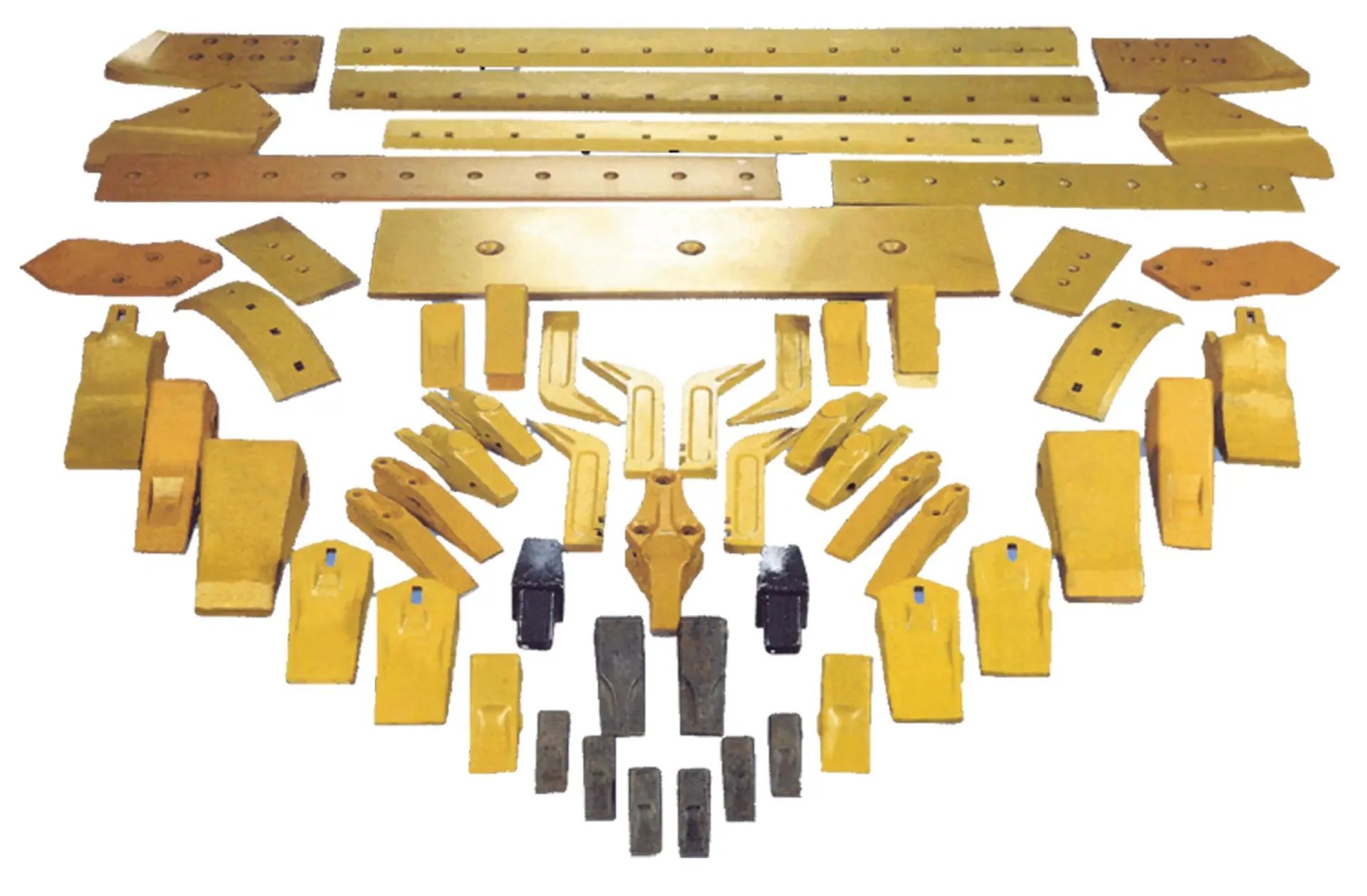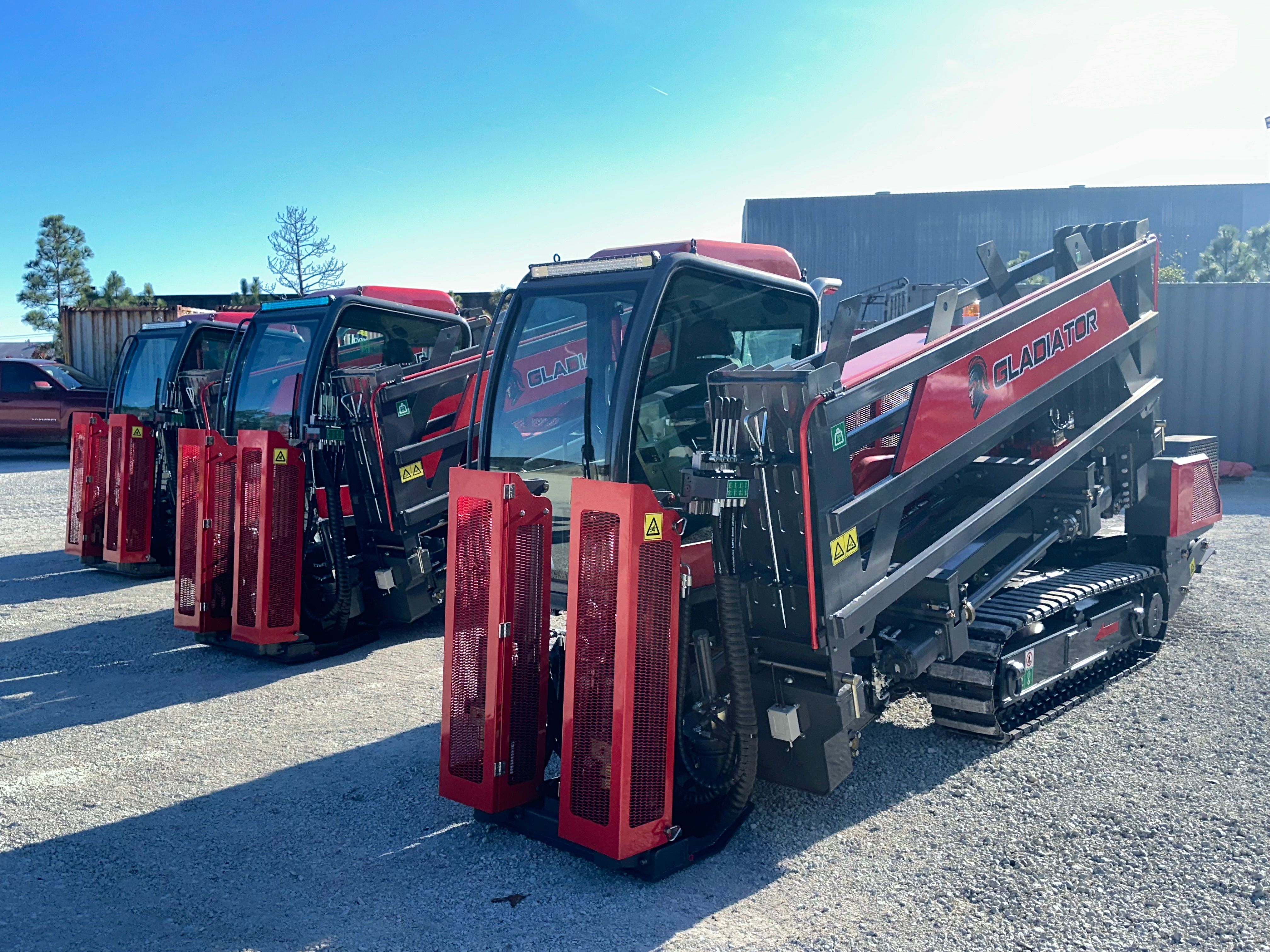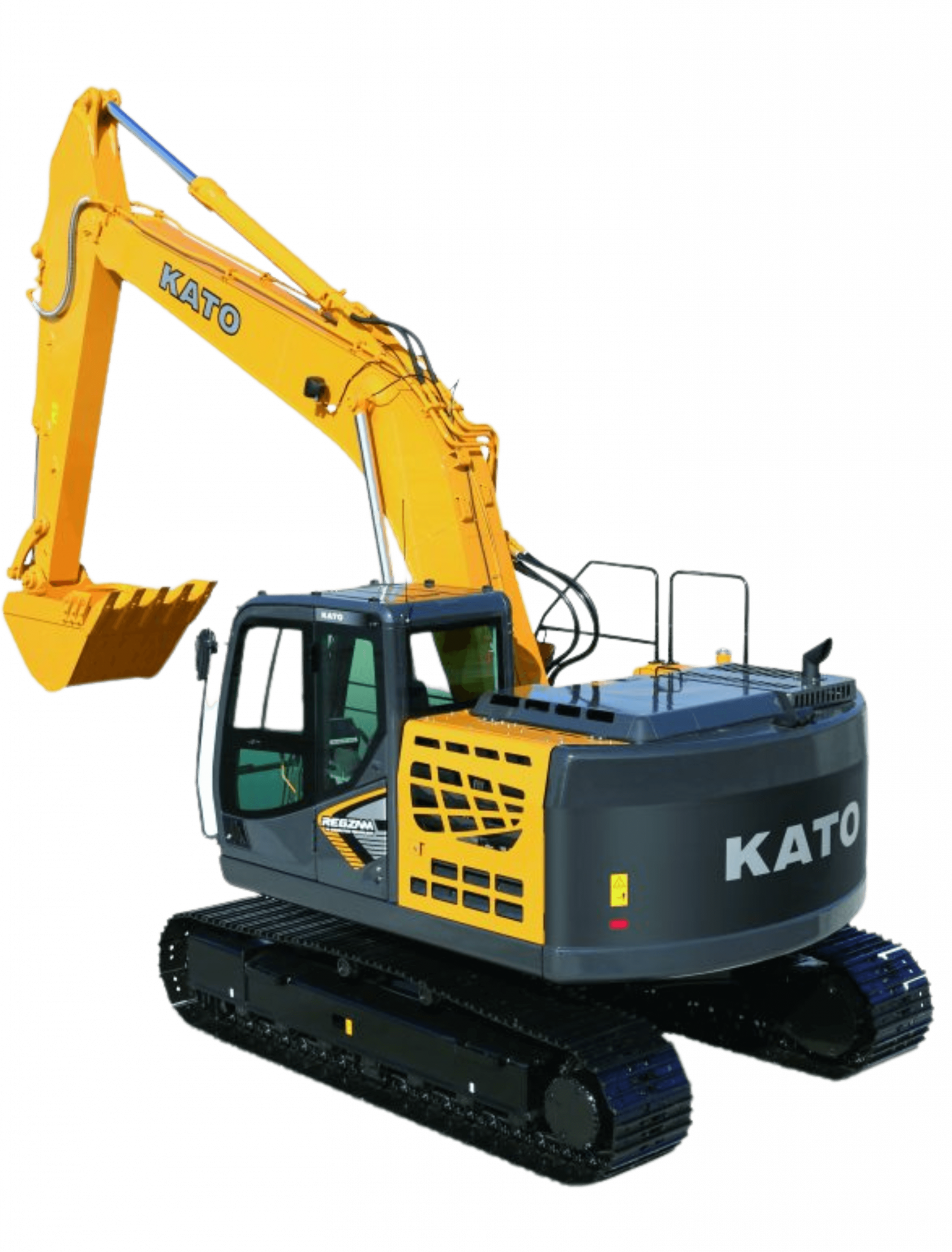Strategic Rig Selection for Trenchless Success
Why HDD Rig Selection Matters
Horizontal Directional Drilling (HDD) involves installing pipelines or cables below ground without open trenches. This method reduces surface disruption, making it popular in urban settings or environmentally sensitive areas. Picking the right rig directly affects how fast work gets done and how often you encounter setbacks.
• The correct HDD rig helps crews overcome unexpected soil layers• Proper power and torque levels minimize the risk of stalled bores• Aligning rig choice with overall goals (cost, speed, safety) ensures better outcomes
When a rig lacks the right features, operators often face more downtime or broken parts. This can strain budgets and delay completion. On the flip side, a well-matched rig leads to smoother drilling, lower repair bills, and fewer detours for local traffic.
Scope of This Guide
Several key factors shape HDD rig selection. Ground conditions affect torque needs, while long bore paths might demand higher horsepower. Budgets also come into play, prompting some to weigh the pros and cons of new vs. used rigs.
• Understand how soil composition impacts drilling strategy• Learn why bore path length and diameter drive rig capacity• Explore torque and pullback metrics for different project scales• Evaluate financial options, from outright purchase to leasing models
By the end, you will see how attachments like cutting heads or fluid management systems add flexibility. Armed with these insights, you can make informed decisions about which rig to deploy on your next underground utility project.
Factor 1: Ground Conditions
Soil Profiles and Their Impact
Soil composition plays a central role in HDD planning. Clay tends to cling to drill bits, increasing friction. Sand can shift easily, causing bore walls to collapse if not managed with the right fluid. Rocky terrain requires higher torque and tougher cutting tools.
• Clay soils call for strong torque and good lubrication• Sandy layers often need stabilizing fluids to prevent collapse• Rocky ground demands durable bits and powerful engines
Before choosing a rig, conduct a geotechnical analysis. This involves sampling soil types, depth profiles, and moisture content. Real data helps you match the rig’s power curve to the project’s true demands.
Rig Features for Varying Ground Types
Different soils put unique stresses on HDD rigs. Harder terrains may need a machine with more torque, while muddy locations might require advanced fluid management systems to clear out spoil.
• Looser soils benefit from rigs that can manage high volumes of drilling fluid• Hard-packed layers need high breakout torque to keep the bore moving• Adjustable drilling speeds let you adapt to changing layers mid-bore
When you know the soil category, it becomes easier to select attachments like special reaming heads or steering assemblies. These add-ons keep drilling precise and reduce wear on the rig.
Practical Example
Imagine a contractor tasked with running a gas line through mixed soils: clay near the surface and rock below. They chose a mid-range HDD rig with a solid torque rating and an added mud recycling system. The recycling unit cut fluid costs, while the rig’s torque let them power through rock without stalling.
• The contractor avoided mid-project setbacks by using the right rig size• The combination of torque and fluid systems kept progress on schedule• Minimal downtime led to a faster handover and satisfied local officials
This scenario shows why careful evaluation of ground conditions is vital. Matching rig performance to the environment can save days of work and thousands of dollars in repairs.
Factor 2: Bore Path Length and Diameter
Short vs. Long Distances
Shorter bores often use smaller, more agile rigs that set up quickly. When a job only spans a few hundred feet, compact equipment offers tighter turning radiuses and simpler logistics. Crews can move between sites faster, reducing overall labor costs.
• Smaller rigs save space in congested urban environments • They typically demand less drilling fluid, lowering overhead • Setup is simpler, making them ideal for quick tasks like crossing a two-lane road
On the flip side, long-distance projects can stretch for thousands of feet or cross sensitive zones like rivers. These jobs often require powerful rigs with advanced steering controls. Specialized guidance systems help maintain alignment over extended runs.
• Rigs with higher horsepower drill faster through varying soil layers • Automated steering tools keep the bore on target, reducing the risk of deviation • Larger footprint and support vehicles may be needed, impacting project logistics
Diameter Considerations
Bore diameter determines how large the pipeline or conduit can be. Some operators underestimate their needs, only to discover mid-project that their rig lacks the torque to enlarge the hole. This can lead to stalled bores, extra reaming passes, or even damaged equipment.
• Properly match the rig’s capacity to your pipe diameter • Plan for upsizing if future expansions or thicker conduits are likely • Factor in extra power for rocky or abrasive soils that increase reaming time
A common oversight occurs when crews assume a rig designed for small bores can handle a thick-walled pipe. That mismatch slows progress and may cause issues like excessive wear on drilling heads.
Minimizing Risk and Cost
Choosing the correct power level prevents unnecessary stress on your rig. Overloading a smaller machine causes frequent breakdowns. Oversizing a rig for a simple bore can inflate fuel and staffing expenses without tangible benefits.
• Always calculate torque and pullback needs in advance • Consult manufacturer guidelines or experienced professionals • Conduct a feasibility study if crossing significant distances or abrasive ground
In one real-world example, a municipal crew overestimated the abilities of their rig. They attempted a long bore with a medium-capacity machine. Frequent mechanical hiccups forced them to upgrade mid-project, incurring extra transport fees and schedule disruptions.
Factor 3: Torque and Pullback Requirements
Understanding Rig Specifications
Torque measures the rotational force that powers the drill bit through soil. Pullback refers to how strongly the machine can pull pipe back along the bore path. Both numbers influence the rig’s suitability for specific jobs.
• Small rigs might have torque below 5,000 ft-lbs, suited for shorter bores • Mid-range models may reach 20,000 ft-lbs or more, handling moderate distances and mixed soils • Large rigs can exceed 100,000 ft-lbs, capable of lengthy bores or harsh conditions
Pay attention to the recommended bore diameter for each torque category. If you exceed these limits, expect slower progress or possible equipment strain.
Balancing Power and Efficiency
Excess torque is not always good. Powerful rigs use more fuel and require heavier support vehicles. If your project demands only modest pullback, investing in a massive machine can bloat your budget.
• Oversized rigs raise daily operating costs • Underpowered machines risk incomplete bores or premature wear • Aim for a machine that meets your maximum load without excessive overhead
A careful balance between torque and efficiency keeps projects on track. Plan your bore parameters first, then match a rig whose performance envelope aligns with those needs.
Adapting to Changing Site Conditions
Soil conditions can shift mid-project, especially when crossing areas with varying rock layers or water tables. A rig with adjustable torque or multiple speed settings adapts to these shifts.
• Variable-speed motors help operators fine-tune drilling rates • Higher pullback capacity is useful in unfamiliar terrain • Renting a more capable rig for complex sites saves time and avoids project halts
A contractor once encountered uncharted boulders while installing fiber lines. They rented a higher-torque rig to manage pullback without halting their schedule. This agile approach kept them within budget and avoided frustrating downtime.
Pro Tip: In tricky or unpredictable settings, consider renting rather than purchasing. You can scale equipment to each job’s demands, reducing idle time for rigs that might be too big or too small for your core workload.
Factor 4: Budget and Financing Options
New vs. Used Rigs
Buying a new horizontal directional drilling rig often comes with the perks of warranties and advanced technology. These benefits can translate to longer intervals between servicing and smoother operations. However, the upfront cost may stretch project budgets, especially for small or mid-sized companies.
• Warranties lower the risk of sudden repair bills • Latest features improve efficiency and reduce learning curves • Higher purchase price may limit immediate cash flow
On the other side, used rigs can offer substantial cost savings. Yet, the gear may have hidden wear or limited remaining service life. If maintenance records are lacking, operators face potential breakdowns at critical points in a job.
• Cheaper purchase price frees up funds for attachments or workforce • Higher risk of unexpected part replacements • Essential to review service history before finalizing a deal
Real-world example: A family-owned contracting firm opted for a used rig to expand services quickly. They discovered frequent mechanical tune-ups were needed, balancing out the initial savings.
Leasing and Financing Strategies
Leasing is sometimes a viable option when you need equipment for a short-term project or want to test a new drilling method without a large investment. Monthly or quarterly payments let you distribute costs over time.
• Minimal upfront expense helps maintain working capital • Easy to upgrade to newer models at lease end • Potential constraints on how you can modify or maintain the rig
Financing deals can also let you buy a rig with small monthly payments. Some plans even permit upgrades after a set term, so you can stay current with emerging technologies.
• Extended payment structures align better with long project timelines • Early buy-out clauses can accelerate rig ownership • Must account for interest rates that affect total cost
Pro tip: Compare multiple lenders or financing options. The best choice often depends on interest rates, contract length, and your anticipated workload.
Hidden Costs
Beyond the price tag, rigs can bring additional expenses. Regular servicing, operator training, and spare parts all factor into the total cost. Skimping on any of these areas can lead to stoppages down the line.
• Training ensures crew members use the rig efficiently • Spare parts on site reduce downtime when a component fails • Ongoing maintenance costs fluctuate based on rig age and usage
Real-world example: A company in a remote area discovered spare parts for their specialized rig were not readily available locally. Shipping costs and wait times piled up, delaying key projects.
Specialized Attachments and Add-Ons
Cutting Heads and Drill Bits
Different soil types require tailored cutting heads. Soft or sandy layers often need bits designed to clear debris without clogging. Hard rock drilling calls for carbide or diamond-tipped cutters that resist high wear.
• Variety of designs: blade heads, conical bits, or rock-reamers • Premium-grade cutters can save hours in tough formations • Frequent checks prevent dull bits from slowing progress
Pro tip: Evaluate geotechnical data before selecting a cutting head. Matching the design to known soil layers avoids excessive reaming passes.
Locators and Guidance Systems
Accurate navigation is key to preventing collisions with existing utilities. Digital locators use electromagnetic signals or GPS-based tracking to guide the bore path. They help you stay within the permitted corridor and avoid rerouting at the last minute.
• Reduces risk of utility strikes that can cause massive repair bills • Modern systems often offer real-time data displays • Training operators on new technology can raise initial setup costs
An urban project once faced rerouting because outdated locating gear failed to spot recently installed fiber-optic lines. Upgrading to a newer system caught potential collisions early, saving thousands of dollars.
Other Optional Tools
Additional tools can dramatically improve efficiency on site. Fluid mixing systems keep drilling mud at the ideal consistency, while mud recycling units cut down waste disposal costs. Pipe rollers allow swift movement of materials into place, reducing manual labor.
• Fluid mixing prevents bore collapses in sandy or loose soil • Recycling setups trim fluid expenses on large bores • Proper material handling equipment eases strain on operators
Real-world example: A major water line installation used a combination of mud recycling and pipe rollers. Crews moved quickly along the bore path, cutting the project timeline by nearly 20 percent.
Pro tip: Weigh the cost of each add-on against your project frequency. Tools that shave days off a job may pay for themselves if you handle multiple bores every year.
Additional Considerations
Equipment Training and Operator Skills
A well-chosen rig still needs skilled hands to run it. Operators who understand torque settings, fluid management, and real-time adjustments can maximize each machine’s capabilities. Many suppliers offer specialized training programs to help your team learn new features and avoid common mistakes.
• Manufacturer-led seminars often include hands-on practice • Online courses or video tutorials may cover routine maintenance • Continuous learning prevents operator errors that can damage critical components
Real-world example: A contractor who invested in advanced operator training reduced their average drilling time by 15 percent. Pro tip: Have experienced team members mentor new hires, fostering a culture of steady learning.
After-Sales Support and Service
Even well-maintained rigs can face hiccups, so dependable customer service is essential. A prompt response from the supplier’s support team can prevent minor faults from halting an entire project. Some companies offer on-site assistance or remote diagnostics to get you back on track quickly.
• Look for suppliers with guaranteed repair turnaround times • Check if extended service plans cover replacement parts • Rapid-response service can reduce downtime in remote job locations
Case study: One municipal project narrowly avoided a two-week delay when their rig’s hydraulic pump failed. The supplier’s 24-hour hotline arranged for overnight shipping and remote installation guidance, saving the crew significant time and expense.
Environmental Compliance
Trenchless projects often occur near waterways or dense populations. Rig selection should consider fluid disposal, noise levels, and emissions standards. Machines that meet local regulations can speed up permit approvals and reduce site inspections.
• Follow guidelines for proper drilling fluid containment • Explore biodegradable lubricants to limit environmental impact • Investigate rigs with built-in systems to capture and recycle drilling mud
Many contractors gain a competitive edge by showcasing sustainable practices. Clients and municipalities often prefer companies that operate within strict environmental protocols. Pro tip: Research local regulations early to find rigs that align with ecological rules, avoiding fines or project delays.
Conclusion and Recommendations
Key Takeaways
Four main factors guide HDD rig selection: ground conditions, bore path, torque and pullback capacity, and budget. Attachments and operator expertise also shape job performance. Aligning all these elements results in smoother operations and fewer last-minute adjustments.
• Investigate soil types to determine power requirements • Match bore distance and diameter to rig size • Balance torque with efficiency to prevent excessive wear • Factor in financing and after-sales support for overall project success
Action Steps
Before buying or renting any rig, compile data on soil profiles, desired bore lengths, and pipeline diameters. Compare models side by side. Schedule demos or consultations with potential suppliers to see how each rig handles real or simulated conditions.
• Gather project specs in a centralized document • Request quotes from at least two different providers • Conduct on-site or virtual demos to verify performance
Leaning on expert advice clarifies if you need specialized drills, locators, or fluid systems for specific terrain challenges.
Call to Action
Explore the HDD rigs and accessories offered by Wolf Machinery Supply to find an ideal match for your upcoming project. Contact our sales or support teams for tailored recommendations that address your unique ground conditions, budget, and deadlines. A solid partnership with the right supplier ensures every bore stays on track and completes without costly interruptions.




